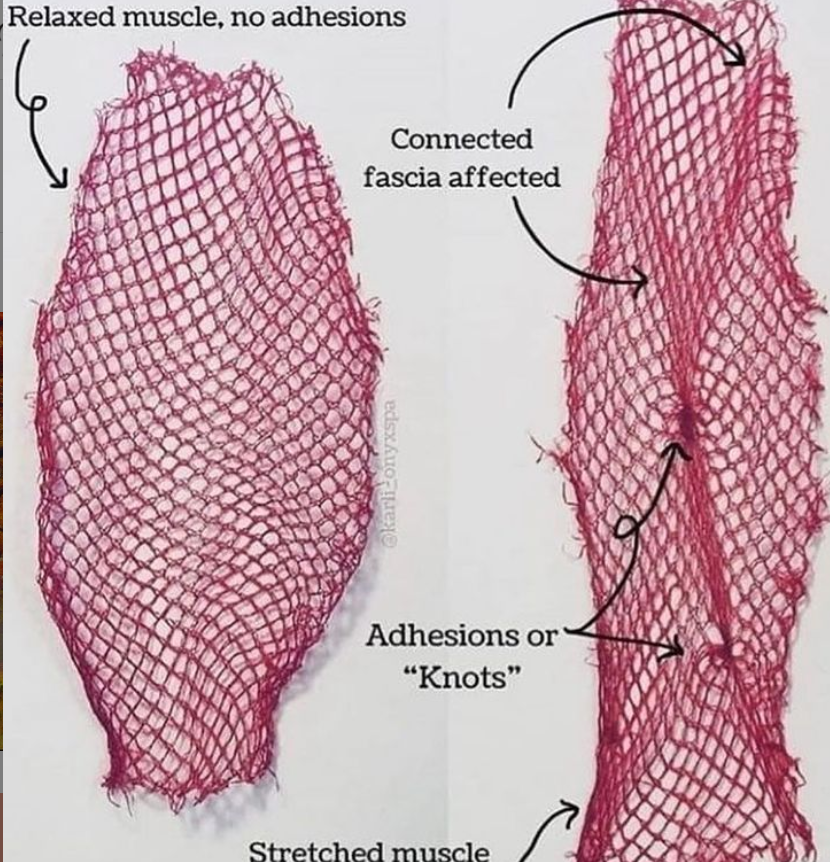Back
Fascial Counterstrain
By Shannon Strauch, PTA, STMT-1 on 10/14/2024

Fascial counterstrain (FCS) is a highly specialized manual therapy technique used to treat dysfunction in the fascia, the connective tissue that supports muscles, organs, nerves, and blood vessels. It's unique because it specifically addresses fascial dysfunctions using gentle, precise movements to restore the body’s natural balance and reduce pain. Here's a more in-depth breakdown:
How Fascial Counterstrain Works:
Fascia Dysfunction
:Fascia is a three-dimensional connective tissue network that envelops and connects every part of the body. When fascial tissue becomes restricted or dysfunctional due to injury, stress, or poor posture, it can lead to pain, limited mobility, and other health issues.
Fascial counterstrain seeks to restore normal motion by alleviating these restrictions through subtle but targeted manipulations.
Strain-Counterstrain Mechanism
:Developed by Dr. Lawrence Jones in the 1950s, counterstrain works by positioning the body in ways that reduce tension or “strain” on dysfunctional tissues.
The practitioner identifies tender or “trigger” points, then moves the patient’s body into positions that release tension, usually by shortening the affected tissue to relieve pain and reset muscle spindles, reducing tension in the surrounding fascia.
It’s a passive, pain-free process that encourages the body to relax and heal.
Neurovascular Component
:Fascial counterstrain goes beyond just the musculoskeletal system; it also affects the neurovascular system. This means it can help regulate blood flow, nerve signals, and lymphatic drainage, addressing issues that may not seem directly related to muscles or joints.
By treating fascial restrictions that influence nerve or blood vessel function, counterstrain can have systemic benefits, improving circulation, reducing swelling, and enhancing nerve function.
What Fascial Counterstrain Helps:
Musculoskeletal Pain
:Back and Neck Pain
: Fascial counterstrain is effective in treating chronic and acute back and neck pain by addressing tension and fascial restrictions in muscles and tissues along the spine.
Joint Pain
: Joint discomfort, especially in areas like the hips, knees, shoulders, or ankles, can often be due to fascial restrictions affecting movement and alignment.
Headaches/Migraines
: Treating fascial tension in the neck, head, and upper back can relieve tension headaches and migraines.
Injury Recovery
:Sports Injuries
: Strains, sprains, and repetitive motion injuries (like tennis elbow) respond well to fascial counterstrain by restoring tissue flexibility and promoting healing.
Post-Surgical Recovery
: Counterstrain can help reduce scar tissue adhesions and support quicker recovery after surgeries by normalizing fascial function.
Chronic Conditions
:Fibromyalgia
: Since fibromyalgia is characterized by widespread muscle pain and tenderness, fascial counterstrain can help alleviate the constant tension and pain that comes with the condition.
Chronic Pelvic Pain
: Fascial counterstrain has been used to treat chronic pelvic pain by releasing tightness in the pelvic and abdominal fascia, which can affect organs and muscles.
Postural Dysfunction
:People with poor posture often suffer from imbalances in fascial tension that affect their alignment and movement. Counterstrain works to correct these imbalances by freeing restricted fascia and helping the body realign naturally.
Nerve Entrapment
:Nerves can become compressed due to tight fascia, leading to pain, tingling, and numbness (such as in carpal tunnel syndrome or sciatica). Counterstrain techniques relieve this pressure by restoring fascial mobility around the nerves.
Circulatory Issues
:Fascial restrictions around blood vessels can impair blood flow, leading to swelling and poor circulation. Counterstrain improves circulation by releasing the fascial structures surrounding veins and arteries, which can help with conditions like varicose veins or chronic swelling.
Fascial counterstrain is an effective, non-invasive therapy for a wide range of conditions, especially those related to chronic pain, fascial restrictions, and postural imbalances. It’s a safe, gentle approach that works by enhancing the body’s natural healing processes, making it a versatile option for many patients.
Read More:
How Chronic Pelvic Congestion in Men Contributes to Prostatitis By Shannon Strauch, PTA, STMT-1 on 12/11/2024 How lymphatic issues can cause symptoms of prostatitis Prostatitis and Tight Pelvic Floor Muscles: A Comprehensive Guide By Shannon Strauch, PTA, STMT-1 on 12/10/2024 How a tight pelvic floor can be the reason for prostatitis symptoms
Are you ready to live pain free?
Request An Appointment